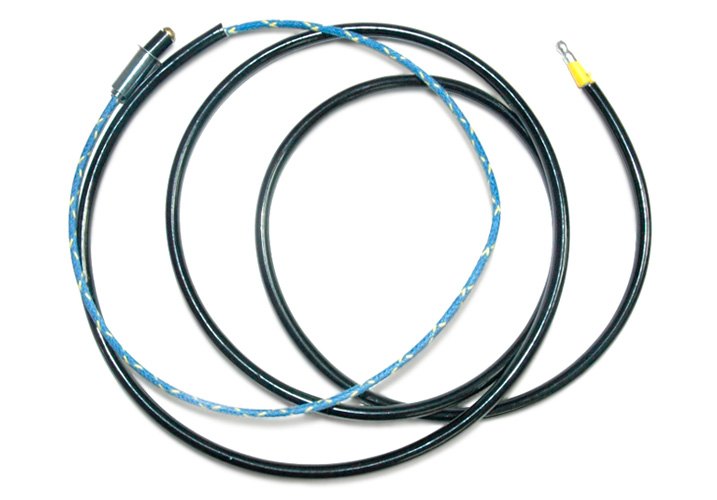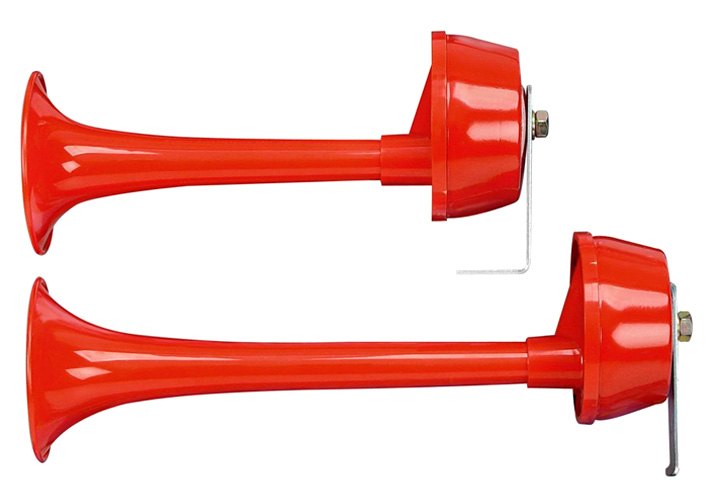How often do you toot your own horn? (Your car's that is.) It's supposed to be there for emergency use; so when the car astride yours on the highway swerves into your lane, a loud blast from the horn is entirely appropriate. Might you also blow the horn when the car in front of you hesitates a bit too long once the light has turned green? The answer to that may depend on how much of a rush you're in. Or perhaps a light "honk" is used when you pull up to a buddy's house, expecting that he would be outside and waiting for you. No matter how frequently or infrequently you may use it, you expect the horn to work whenever you want.
Of course, that one time when you really need the horn is when it doesn't work at all. Unlike components like headlights or power windows, it may have been weeks or months since you last tried the horn. Now you're faced with moving forward with a repair, beginning with "do I attempt this myself or take it to a shop?" This article is aimed at the DIY repair gal or guy, because fixing an inoperative horn might turn might turn out to be easier than expected. We will also inform you, as we have in other similar articles, that this topic was chosen because of its high rank on Google and YouTube searches. Instead of reading "their" articles, read ours! We intend to provide straightforward, honest, and direct information, without a sales pitch attached.
Diagnosing an inoperative horn is not that different from diagnosing any other electrical device on your vehicle: in addition to the device itself, there are wires and wire connections, a control knob or switch (in this case, the horn button), and a fuse. It's always a good idea to start with the fuse. Fuses are simple to check and replace, and by design, they are the 'weak link' in the circuit, intended to fail in order to protect something more valuable from failing first. (This article tells you how to do just that: https://www.carid.com/articles/how-to-check-and-replace-a-fuse.html.) If you don't know where the fuse box is, check your owner's manual. As a best practice, I like to remove the fuse to check it, as it is not always easy to visually determine a fuse's condition while it's installed. If there is any doubt, try a new fuse. Fixed it? Great, you did it. Horn still does not work? Let's move on.
How To Fix A Horn
Locate the actual horn or horns on the vehicle. They will be up front, and are usually in an obvious place, such as behind the grille, in front of the radiator, or on the header panel (the frame-like structure at the front of the engine compartment). How many horns are there, one or two? If there are two and neither work, then it's probable that the issue is not the horns themselves (it's unlikely though not impossible for both horns to have failed). We cannot make that same presumption for the case of a single horn. Because of their mounting location, horns and their wiring connections are subject to everything thrown at them: water, snow, ice, road salt, sand, and bugs can all cause deterioration.

Give the horn or horns a visual check for physical damage. (I've seen cases where a minor fender-bender has crushed the horn, leaving the driver to wonder why it doesn't work anymore.) Also check the wiring connections. If they can be removed, either by slipping off the blade-type terminal or unbolting a ring terminal, do so. It's good practice to clean these connections. You can use a wire brush, a screwdriver blade, a piece of sandpaper, even an old toothbrush, anything that will wipe away any signs of corrosion or gunk. Reconnect everything, making sure the connections are secure.

Normally, we would next suggest checking for a ground wire; however, on some vehicles, especially older ones, the horn always has 12 volts positive fed to it, and when the horn button is pressed, that action completes the ground circuit which then sounds the horn. So don't install a "missing" ground wire in cases like that, or the horn will sound continuously! (Making this mistake as a teenager is how I learned about horn circuits.) A way to test the horn or horns, though, is to take a jumper wire and just touch the ground terminal on the horn to a good clean ground on the car body or engine. If the horn sounds, you know that it works and that the problem is elsewhere.

Did cleaning the electrical connections at the horn fix it? Wonderful! If not, it's time to move to the horn button. Here, we must insert a very strong caution: if your car or truck is equipped with a driver's side air bag (may be labeled "SRS" [Supplemental Restraint System] or "SIR" [Supplemental Inflatable Restraint] depending on make), it is very dangerous for you to try to access the horn control in the steering wheel. Even with the ignition off, an air bag which is tampered with could inflate and cause serious bodily injury, or worse. If you've checked the fuses, horns, and wiring on your air bag-equipped car and the horn is still inoperative, it is best to let a trained professional resolve the problem for you.
If your vehicle does not have a driver's air bag (true for most vehicles built before 1990), then you can pop off the horn button or ring and examine the wiring connections underneath. Often, the constant motion of the steering wheel will have a detrimental effect on these connections. Similar to what was done at the horns, disconnect the wiring, clean the contacts, and reinstall everything.


If the fuse is ok, the horn connections are tight and clean, and the wiring under the horn button is in good shape, the problem is likely the horn itself. If you have another vehicle and can easily access its horn, temporarily unbolt it and try it on your car. Horns do go bad, given the external conditions they are subject to, and the good news is that we have a wide variety of horns available, some vehicle-specific, and some universal. This could even be an opportunity to upgrade to a louder horn, all the better to wake up that sleepy driver in front of you! We hope you found this DIY horn repair article useful.

